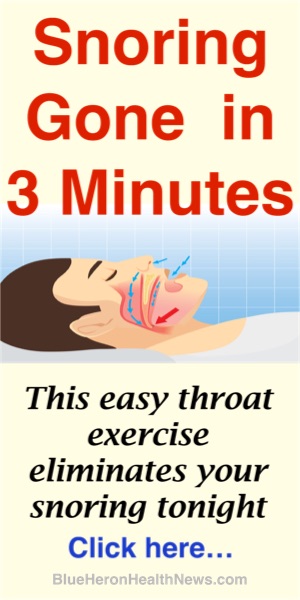Obstructive sleep apnea (OSA) is a condition in which breathing stops involuntarily for brief periods of time during sleep. Normally, air flows smoothly from the mouth and nose into the lungs at all times. Periods when breathing stops are called apnea or apneic episodes. In OSA, the normal flow of air is repeatedly stopped throughout the night. The flow of air stops because airway space in the area of the throat is too narrow. Snoring is characteristic of obstructive sleep apnea. Snoring is caused by airflow squeezing through the narrowed airway space. Untreated sleep apnea can cause serious health problems such as:
- hypertension
- heart disease
- stroke
- diabetes
Proper diagnosis and treatment are essential to preventing complications.
Symptoms of Sleep Apnea
Sleep apnea causes episodes of decreased oxygen supply to the brain and other parts of the body. Sleep quality is poor, which causes daytime drowsiness and lack of clarity in the morning. People with sleep apnea may also experience the following symptoms:
- headaches that are difficult to treat
- feeling disgruntled (grumpy)
- forgetfulness
- drowsiness
Other symptoms include:
- hyperactivity in children
- worsening depression
- poor job and school performance
- loss of interest in sex
- leg swelling (called edema, which can occur when sleep apnea is severe)
Daytime drowsiness puts people with sleep apnea at risk for motor vehicle crashes and industrial accidents. Treatment can help to completely relieve daytime drowsiness caused by sleep apnea.
What Causes Obstructive Sleep Apnea?
There are several types of sleep apnea, but OSA is the most common. OSA is more likely to occur in older people and people who are overweight. Evidence shows that weight loss causes marked improvement in symptoms. Sleeping on your back can aggravate sleep apnea.
Types of Sleep Apnea
The three types of sleep apnea are:
- Obstructive sleep apnea: This is the most common type of sleep apnea, in which the airway has become narrowed, blocked, or floppy.
- Central sleep apnea: There is no blockage of the airway, but the brain doesn’t signal the respiratory muscles to breathe.
- Mixed sleep apnea: This is a combination of obstructive and central sleep apnea.
Who Is at Risk for Obstructive Sleep Apnea?
Risk for OSA increases if you have conditions or features that narrow the upper airway. Risk factors of OSA include:
- children with large tonsils and adenoids
- men with a collar size of 17 inches or more
- women with a collar size of 16 inches or more
- large tongue, which can block the airway
- retrognathia, which is when your lower jaw is shorter than your upper jaw
- a narrow palate or airway that collapses more easily
Heart disease is more common in obese people, and obesity is a risk factor of heart disease, high blood pressure, and sleep apnea.















0 nhận xét:
Đăng nhận xét